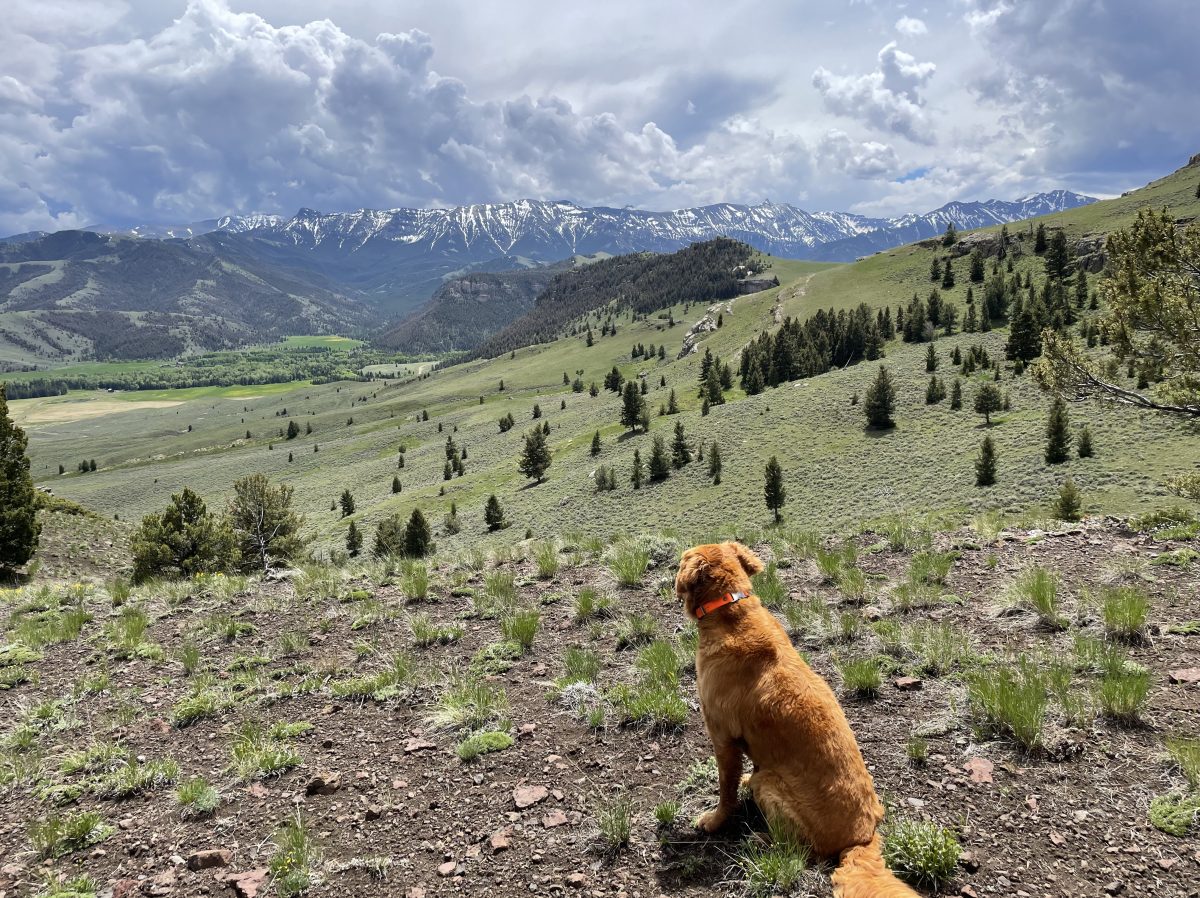According to an article I read, the GYE has 1.1 Grizzly Bears per 100 square kilometers (38.6 sq. miles). I’m not sure how many bears live in the Sunlight area of Cody, but I know its a drop-off place for problem bears. I was told by a Forest Service contract employee last summer that they collared 25 bears here last spring.
That same article estimated grizzly density during the time of Lewis and Clark at 3.1 bears per 100 square kilometers. Three times as many bears. I’d be curious to know the density around here.
What I do know is that although its common to see lots of fresh bear sign every spring, its not so common to run into bears. 1 bear per 40 square miles is a lot of miles. But I also know that bears like to use the same trails we do and precaution and care are important. I carry bear spray, watch the dog and stay alert, especially around blind corners and try to stay out of heavily wooded areas in the spring.

That being said, I took a nice hike up Elk Creek the other day and spent about 1/2 hour investigating some wonderful bear tracks. After taking Jim Halfpenny’s tracking class last fall, I’ve become accustomed to looking at tracks from many different angles, including getting down on the ground and eyeballing them. Jim also urges his students to use all their senses. Feeling the imprints with your sensitive finger tips is just as important as the visuals.
By mapping out one track distance to the next, I was able to estimate where the next track might be even if I couldn’t detect it. Then by putting my face right down next to the ground I could make out the faint imprint of the track. After doing this for several non-discernible tracks, I was soon able to pick them out easily. I started noticing how, even if there was no visible track, the grass was flattened or there might be the slightest disturbance in the soil.
I spent a lot of time trying to understand this bears’ gait. Bears usually amble, where the back larger foot oversteps the front. For some reason I don’t yet understand, this bears’ hind foot hardly imprinted and it was mostly his front foot that was registering deeply in the mud.

I backtracked the bear, who was headed towards Elk Creek valley not too far from my cabin. He’d come up a spur trail by the creek. I wondered what the bear was looking for, what he was eating, where he found food. I put my fingers in the track of his front foot and felt all the ridges. With my palm pressed against the large pad, I realized here I was ‘touching’ this bear’s foot. It held all the mystery and magic of bears themselves, all in a print.

Bears are amazing. Love that straight-line look of a griz print that tells you right off what it is, even without long claw marks. I’ve spent much of my life tracking one critter or another, and you’re getting it right–the gestalt from the animal’s eye-view teaches you a lot about what they see & are looking for.
LikeLike